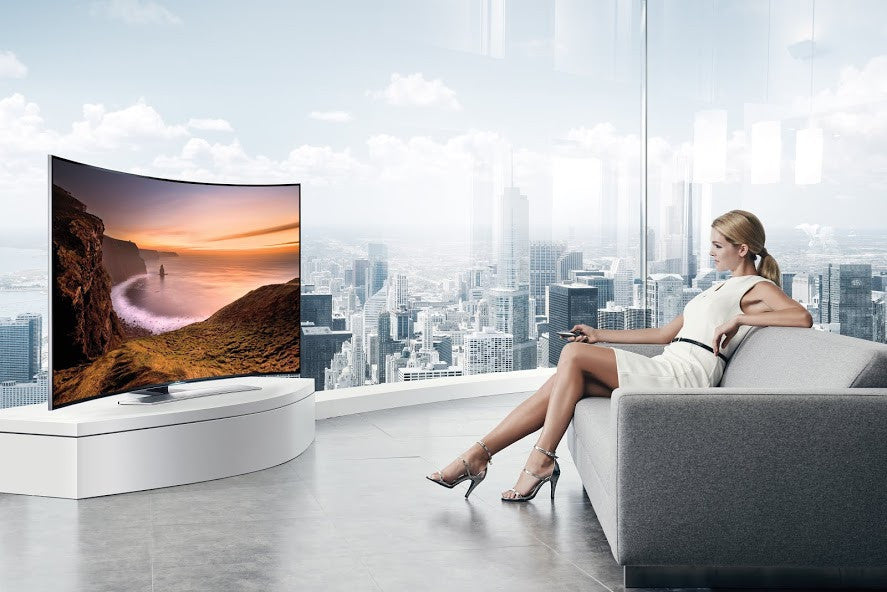Set up your home theater like a THX master with certified products
Posted on 14 March 2017

Building a killer home theater involves more than just throwing a big wad of cash at your local electronics dealer. It requires planning, finesse, and scientific acoustic manipulation. The engineers at THX pioneered a lot of the methods and technologies used in today's top systems.
So we took a trip to their San Rafael, California, headquarters to get a lesson from the masters. Here's what we learned.
One way to create the ultimate home theater experience, not surprisingly, is to fill the room with THX-certified products. If you can afford to do that, awesome. But you still need to employ a set of design strategies to ensure that the gear performs it its peak capability. The following advice applies whether your sound-blasting budget allows only a couple hundred or as much as several thousand dollars.
The Seat:
What you sit on is just as important as where you're sitting. Here are some things to keep in mind when choosing furniture for your home theater.
- Keep chairs clear. Seats with high backs can block the audio coming from your surround sound system, compromising the experience.
- Place furniture clear of the speakers.
- Support your spine. This is about minimizing distractions. If you're back is stiff and your coccyx is numb, you're not going to feel that bass rattling your can.
- Get off the wall. Positioning seats next to the walls interrupts the path sound travels in most rooms.
The Room:
Before you start shoving seats and speakers in an open space, stop and look at the room. The acoustic chamber contributes about half of the potential quality of the sound and presentation. Plan the layout carefully.
- Keep the room quiet. Remove sources of distracting background noises. Shut the door!
- Control the light. Relocate distracting lights or reflections.
- Placing the TV opposite a window that faces the sun will cause a glare.
- Use lights that can be dimmed for the best viewing. Close the shades.
- The room doesn't need to be completely dark, just dim.
- Eliminate visual distractions. Avoid bright reflective surfaces near the screen. This is especially important with a 3D TV. But 3D or not, peripheral visual distractions pull you out of what's supposed to be an immersive experience.
- Stay centered. Be sure the room allows the center channel to be placed in the heart of the system. This is the source of most of the film's dialogue.
- Don't overdo dampening. You don't need to run out and buy acoustic treatment. Most living spaces with bookshelves, pictures, furniture, and drapes absorb and reflect sound in a way that's fine for most people.
- Don't plan on a completely empty room, as it can act as an echo chamber.
The Picture:
Shop for the right TV to fit your room. You want a screen that's big enough to be enveloping, and small enough to be sharp and clear.
- Check the size.

- What size screen should you get? You want a horizontal viewing angle of 40-degrees from your seats. There's an actual formula that helps you achieve this. Measure the distance of the screen to the main seat, in inches. Multiply that by .84 and you'll get a diagonal screen size (Distance x 0.84 = Screen Size). This a maximum screen size recommendation.
- If your seat is 72 inches from the screen, the formula would look like this: 72 x .84 = 60.4. So the maximum recommended screen is 60 inches. Of course, you can go larger. It's really personal choice. Just be sure that you don't have to move your head back and forth to keep up with the action on screen.
- Find a deal. Technology changes rapidly, so it's difficult to say what will be the best type of HDTV to purchase. THX would like you to purchase THX-certified displays. If you can afford the best, get it. But, get the best TV available in your price range at the time.
The Sound:
That rumbling crescendo at the beginning of a THX-certified film in a public theater, known as the Deep Note, emphasizes the importance of the system's speakers. THX told me that they do not certify speakers that are built in to a TV. If you've spent time listening to the tinny tones coming out of most TV speakers, you already know why.
- Seek uniform delivery. You want a sound coverage pattern, known as off-axis performance, that equally envelops everyone in the room.
- Test the placement. The center channel is the biggest challenge to a sound system and the most important speaker in the room. Low quality speakers are prone to lobbing, a degradation of sound caused when speakers of the same size and shape are placed too close together. This degradation means each seat will get a different sound. But there is a test to make sure the speaker array offers the same sound to each viewer: pink noise.
- Pink noise is a test signal. It's a shushing sound that has the same energy at all octaves. You can download iOS and Android apps that feed pink noise through the system. Pump up the pink noise and walk around your theater room.
- You'll hear the sound change as you move. You want to make sure the sound that's broadcast to all of your seating sounds the same. Adjust the room's configuration until you're accurately aiming all the speakers at your audience.
- Find the center. The center channel is fine below the screen. It's better above the screen. It's at its best when it's behind or within the screen—that works if you're using a projection system with a screen that allows sounds to pass through without muffling them.
- Position the surround. Surround sound speakers should be to the side, above, and maybe a bit behind the audience. Do not aim the speakers right at the listeners' ears.
- The surround sound speakers should have a left and right spread of 45 to 60 degrees. If possible, get high dispersion speakers, which spread the sound as it comes out of the speakers.
- Match the mouths. Forward left and right speakers should be 5/8 of the way up the TV screen. This aligns the speakers with the actors' heads on the screen, creating the feeling that the sound is coming from their mouths.
- Pump the bass. The goal with the subwoofer is to have it play all the sounds at frequencies of 80Hz and lower. (Check your particular hardware's instructions for setup procedures.) Keep the subwoofer away from walls. The quality of the bass will increase and your neighbors will thank you.
The Electronics:
To connect the TV and speakers together, you want a configuration that's high in quality and low in complexity.
- Match the receiver to the room. It's important that your receiver is appropriate for its environment. An overpowered receiver in a tiny room is just a waste of money. THX has three room size categories for certified receivers. THX ultra is for large home theatre with seats more than 12 feet away from the screen. THX Select2 is for a medium home theatre with seats 10 to 12 feet away from the screen. THX I/S Plus is for small home theaters with seats six to eight feet away from the screen.
- Make it plain. If you have five remotes on the table, you're doing it wrong. The goal is to operate the system using a single remote that the least tech-savvy person in the house can understand.
- Get the right gear. First, cover the basics. Does the receiver you're considering have enough inputs for all of your peripherals? There's no shame in purchasing equipment from a dealer that will help you set it up and show you how to use it. If the equipment's manual is larger than the last book you read, get help.
The Calibration:
Most sets come from the factory ready to watch a variety of content. But they can be set up to make sports look like soap operas. Here are two tips to get the best quality picture you can.
- Optimize it. Use a THX optimizer to help the system perform at its best. A THX optimizer is available on Terminator 2: Judgment Day, and it's $5.50 on Amazon. The latest THX-certified TiVos (http://www.tivo.com/products/tivo-premiere-elite/index.html) also have the optimizer built in.
- Process via the TV. Don't rely on an image processor that may exist in your receiver or other supplemental equipment. The TV's internal processor is the best, so check the settings to make sure it's in use.




1 comment
Great article for home theater setup!!!
Now here is the Cinema hall setup